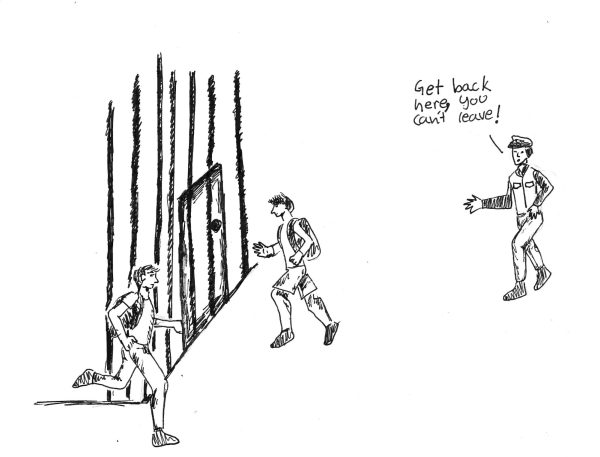
Is the new enforced flex policy a loss of independence for students and teachers alike? Not only is the new flex schedule inconvenient, but it actually may be harder for students to get the help the period is intended for.
The beloved (or ignored) 44 minute flex time has been moved from the last period of the day to between first and second period (or fifth and sixth). Intended to increase student participation, the flex time change has unleashed a plethora of mixed reactions from both students and teachers.
Some teachers like John Golden, a freshman and senior English teacher, see the potential for incredibly crowded and unmotivated classrooms. “My biggest concern is logistics, where are 1500 students going to go?” said Golden.
The reason flex exists is to give students who want to stay on top of their work an opportunity to do so. So one of the main concerns of the new time is will the teachers actually be able to serve this purpose?
Because of the amount of students each teacher has (usually between 150 -200 students with both their A, and B day classes), students getting priority will potentially dwindle and the teachers will in fact be able to help less people than before.
Eric Levine, a freshman and senior English teacher at Cleveland, has many concerns about the new schedule. Much like Golden, he is skeptical about the negative effects the schedule is meant to change. More so, he is concerned about having an unmanageable amount of students who need more help than the teachers can give.
“It’s controlling and super inconvenient. Where will kids go?” said Levine.
As for the students, their reactions to the change is what you would expect. Sammy Vorhees, a sophomore, talked about her first reaction to the news.
“That just angered me; they better not do that,” Vorhees said.
However, the school decided to implement it the first full week of school.
There were many parts of this flex that seemed not well thought out, or simply restrictive. Students are not allowed to leave campus and must be in a classroom, the cafeteria, the library or one of the other spaces set up for students at this time.
To their horror, students have lost their “early release.”Although regular attendance is not taken during flex, teachers can schedule students to come to flex. In addition to this students can schedule themselves to see a teacher if there is space. They can also attend an activity or event if it is offered.
Val Kaminsky described how a flex period, where he had no work, was a lovely early release. This allowed him to get home before the normal release time and even complete work at home.
“It’s not going to benefit me,” Kaminsky said.
This is just one of the many cons to the new schedule. Because flex isn’t at the end of the day anymore, it’s harder to get work done for your end-of-day classes. It has been beneficial for students to have flex after all of their classes to be sure they get all their work completed. In addition to this, those who played sports and had early release would simply get to leave and not miss any of their classes on flex days.
Flex will not be the same this year. Some things to look out for are: Will students actually do work in the classes they go to or will they just disrupt the environment? Will attendance rates go down during the second period because students leave after the first? Will the students who need help get it? And most importantly, is this a loss of trust?







